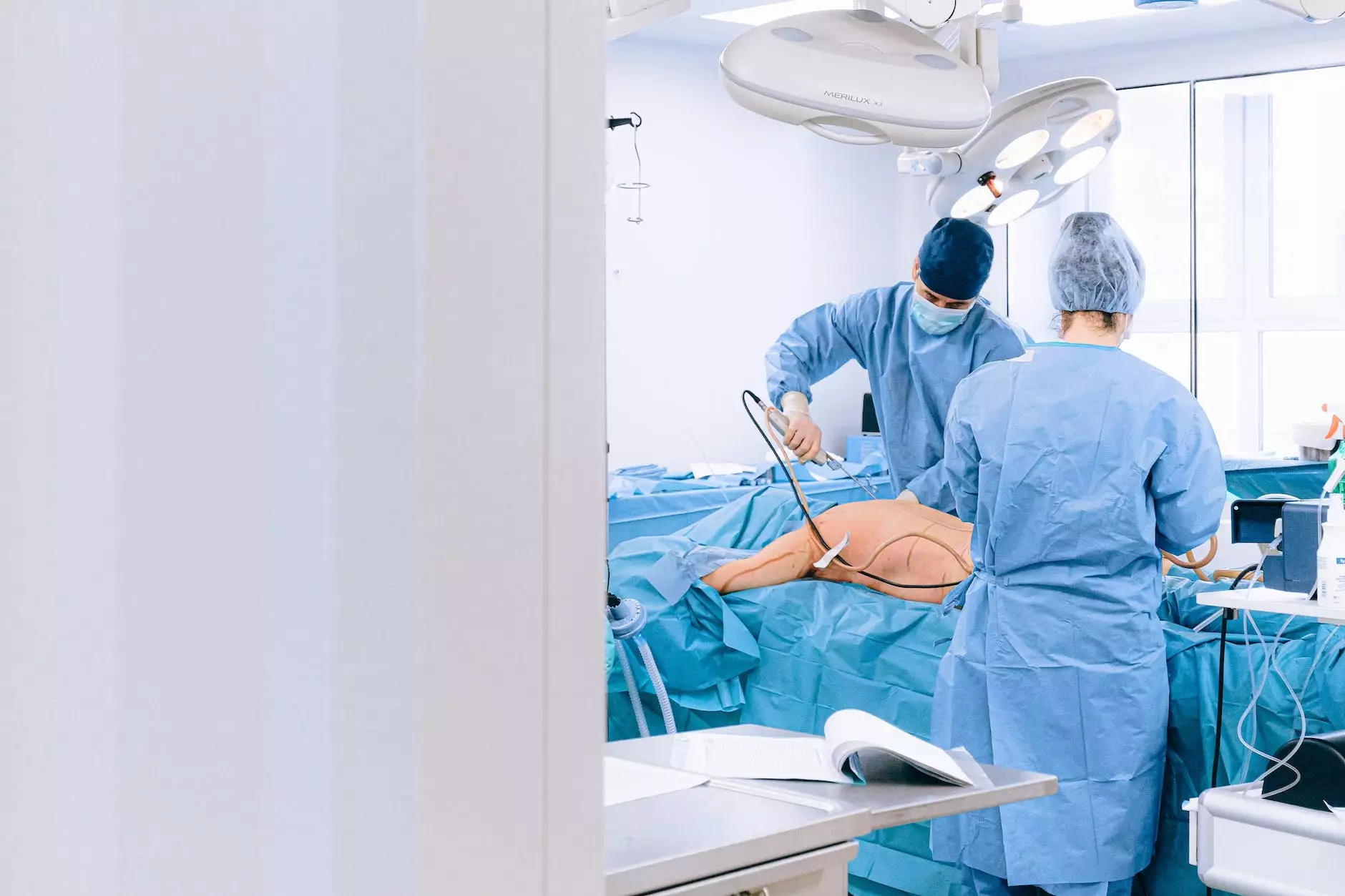Bilateral Salpingo-Oophorectomy: Understanding the Procedure and Its Importance

Bilateral salpingo-oophorectomy is a term that may sound complex, but it encompasses a significant surgical operation that affects many women’s health journeys. This procedure involves the removal of both the ovaries and both fallopian tubes and is often performed for various medical reasons. In this comprehensive article, we will explore the implications of this surgery, the conditions that may necessitate it, the recovery process, and other critical aspects to ensure you understand this vital procedure and its significance in the realm of women’s health.
What is Bilateral Salpingo-Oophorectomy?
A bilateral salpingo-oophorectomy, often abbreviated as BSO, is a surgical procedure where a gynecologist removes both of a patient's ovaries and fallopian tubes. This operation is performed under general anesthesia and can be executed through various surgical techniques, including laparoscopic (minimally invasive) methods or traditional open surgery. The decision to undergo this procedure is not taken lightly and is made after thorough evaluation and consultation with a qualified healthcare provider.
Indications for Bilateral Salpingo-Oophorectomy
There are several reasons why a healthcare provider might recommend a bilateral salpingo-oophorectomy. Some of the most common indications include:
- Ovarian Cancer: One of the most critical reasons for undergoing a BSO, particularly when cancer is confined to the ovaries.
- Endometriosis: Severe cases may necessitate the removal of the ovaries to alleviate symptoms and prevent disease progression.
- Ovarian Cysts: Large or persistent ovarian cysts that cause pain or other complications.
- Genetic Predisposition: Women with BRCA1 or BRCA2 gene mutations may opt for this surgery to reduce the risk of developing breast and ovarian cancers.
- Uterine Fibroids: When fibroids lead to significant complications or symptoms, a BSO may be considered.
The Procedure Explained
The surgery typically begins with the administration of general anesthesia, ensuring the patient remains unconscious and free of pain during the procedure. The surgeon may employ one of the following methods:
- Laparoscopic Surgery: This minimally invasive approach requires only small incisions, allowing for quicker recovery, less pain, and minimal scarring.
- Open Surgery: In some cases, open surgery may be necessary to ensure complete removal of the ovaries and fallopian tubes. This involves a larger incision in the abdomen.
During the procedure, the surgeon carefully detaches the ovaries and fallopian tubes from surrounding tissues and blood vessels, then removes them entirely from the body. Once completed, the incisions are closed using sutures, which may be either absorbable or require removal at a later date.
Benefits of Bilateral Salpingo-Oophorectomy
Undergoing a bilateral salpingo-oophorectomy can have numerous benefits for women's health, particularly in specific medical situations. Some of the key advantages include:
- Reduction in Cancer Risk: For women with genetic mutations, BSO significantly minimizes the risk of developing ovarian and breast cancers.
- Pain Relief: For those suffering from conditions like endometriosis or severe ovarian cysts, removal can lead to substantial pain relief and improved quality of life.
- Improvement in Hormonal Balance: In certain instances, the removal of ovaries may lead to hormonal stability, especially when combined with hormone replacement therapy.
- Prevention of Complications: The surgery can eliminate the risk of potential complications from existing gynecological conditions.
Risks and Considerations
As with any surgical procedure, a bilateral salpingo-oophorectomy carries potential risks and complications. Some of the risks associated with this surgery may include:
- Infection: As with any surgery, there is a risk of infection at the incision site or internally.
- Bleeding: There is a possibility of excessive bleeding during or after the procedure.
- Hormonal Changes: The removal of ovaries leads to immediate menopause, which can cause symptoms such as hot flashes, mood changes, and vaginal dryness.
- Surgical Complications: These could include injury to surrounding organs or structures during the procedure.
Post-Surgery Recovery
Recovery after a bilateral salpingo-oophorectomy varies depending on whether the surgery was performed laparoscopically or through open surgery. Generally, the recovery timeline may include:
- Hospital Stay: Patients may stay in the hospital for one to two days after surgery, depending on their recovery.
- Pain Management: Patients are typically prescribed pain medications to manage discomfort during the initial recovery period.
- Activity Level: Light activities can be resumed within a few days, but it's crucial to avoid strenuous exercises for several weeks.
- Follow-Up Appointments: Regular check-ups should be scheduled to monitor the recovery process and address any concerns.
Long-Term Considerations
Following a bilateral salpingo-oophorectomy, patients need to consider their long-term health and well-being. Some important aspects include:
- Hormone Replacement Therapy: For many women, hormone replacement therapy is recommended to alleviate menopausal symptoms caused by the removal of the ovaries.
- Regular Health Screenings: Regular check-ups with a healthcare provider for overall health maintenance and early detection of potential issues are critical.
- Emotional Support: Psychological and emotional support groups may be helpful to navigate the emotional changes associated with surgical menopause.
Conclusion
The decision to undergo a bilateral salpingo-oophorectomy is a pivotal moment in a woman’s healthcare journey, driven by informed decisions based on individual health needs. While this surgical procedure comes with its set of risks, it also offers significant benefits and can be a life-saving choice. Understanding the procedure, its implications, and the pathways to recovery empowers women to make informed decisions concerning their health.
If you are considering a bilateral salpingo-oophorectomy, it is vital to consult with a qualified gynecologist who can provide expert advice tailored to your specific circumstances. A comprehensive approach to your health, including pre-surgical counseling and post-operative care, can significantly enhance your overall experience and outcomes.
Learn More About Bilateral Salpingo-Oophorectomy
For more information and to explore the services offered, visit drseckin.com, where our team of dedicated professionals is ready to assist you with your health concerns and guide you towards making the best decisions for your well-being.









